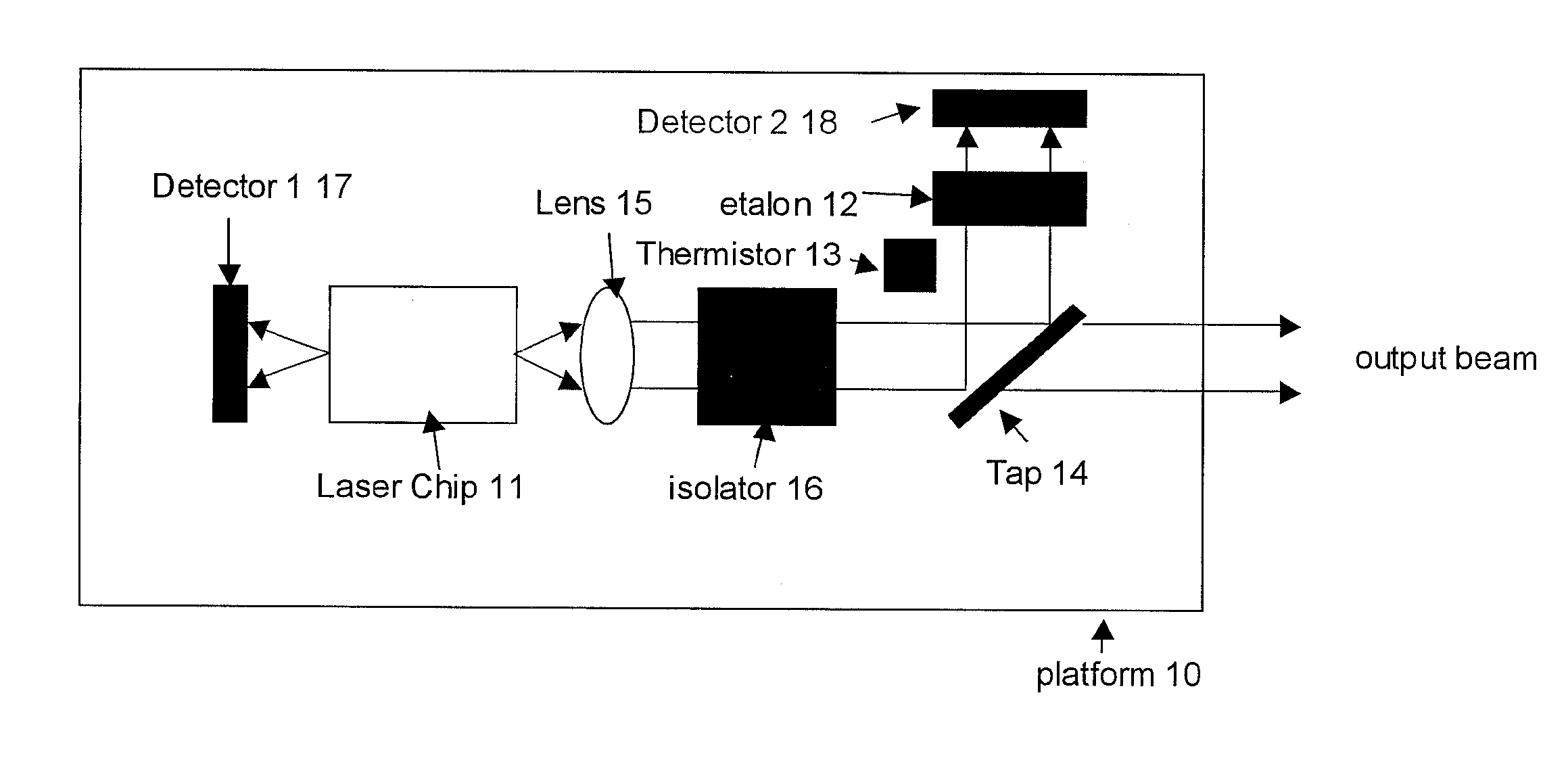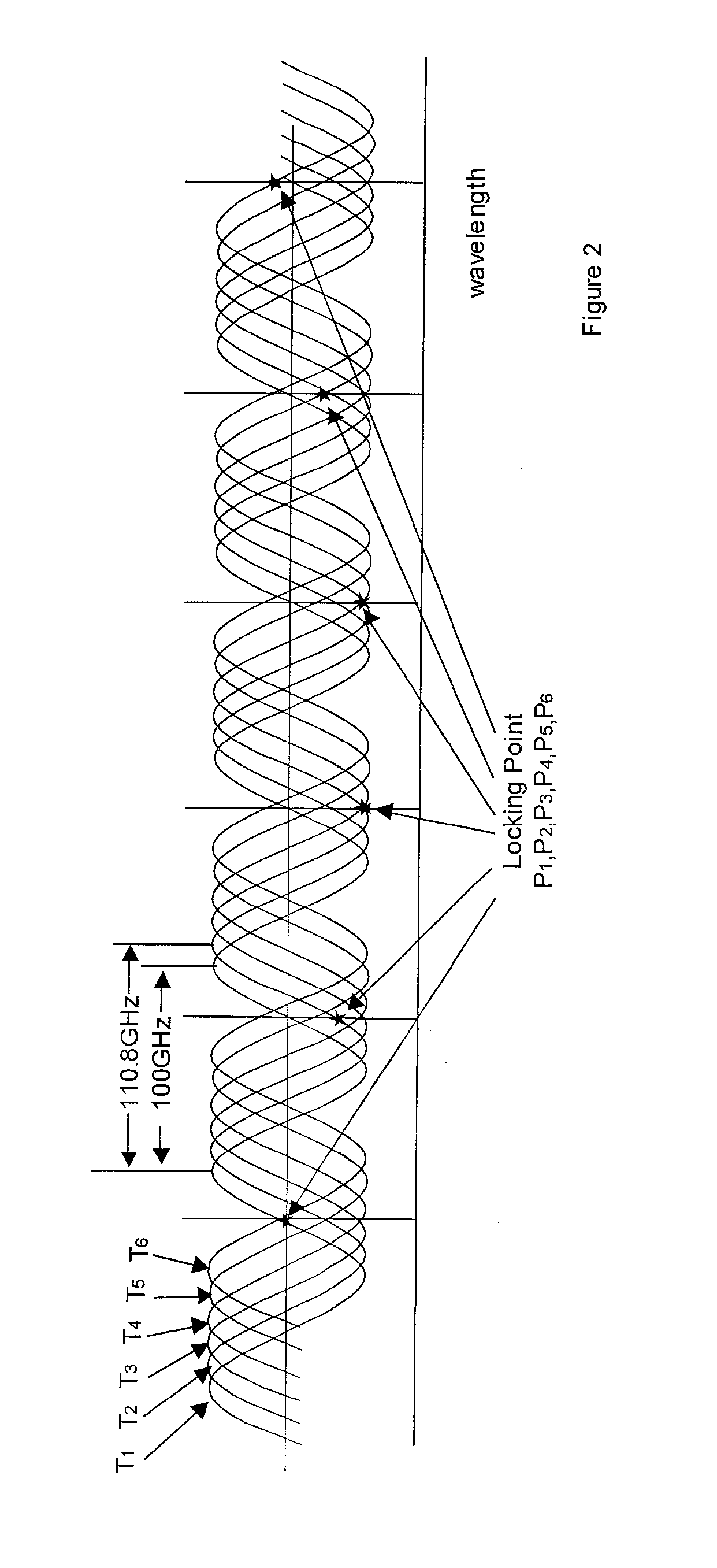Thermally Tunable Laser with Single Solid Etalon Wavelength Locker
- Summary
- Abstract
- Description
- Claims
- Application Information
AI Technical Summary
Benefits of technology
Problems solved by technology
Method used
Image
Examples
Embodiment Construction
[0017] Distributed feedback semiconductor lasers or distributed Bragg reflection semiconductor lasers are a key device and widely deployed in optical communication. their wavelength can be thermally tuned for a few 100 GHz. To meet the strict requirement of the wavelength stability, their wavelength is controlled by a wavelength locker, in which usually a Fabry-Perot etalon is used as a wavelength discriminator.
[0018] The etalon in a wavelength locker usually has 100 GHz free spectrum range, which is equal to the most popular ITU-defined channel spacing. When it is used to lock a thermally tunable laser, the temperature dependence of the FSR of the etalon becomes a concern. If a solid etalon is made of, e.g., fused silica, the etalon is placed on a separate temperature controller from the laser diode; other-wise, an air-spaced etalon is used to counter the temperature fluctuation. Either ways increase packaging complicacy and the cost. The laser diode and etalon co-packaged on one ...
PUM
 Login to View More
Login to View More Abstract
Description
Claims
Application Information
 Login to View More
Login to View More - R&D
- Intellectual Property
- Life Sciences
- Materials
- Tech Scout
- Unparalleled Data Quality
- Higher Quality Content
- 60% Fewer Hallucinations
Browse by: Latest US Patents, China's latest patents, Technical Efficacy Thesaurus, Application Domain, Technology Topic, Popular Technical Reports.
© 2025 PatSnap. All rights reserved.Legal|Privacy policy|Modern Slavery Act Transparency Statement|Sitemap|About US| Contact US: help@patsnap.com



